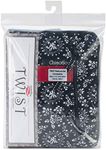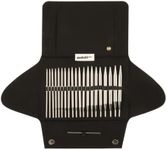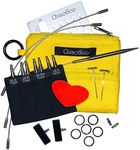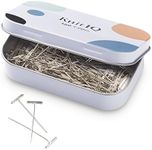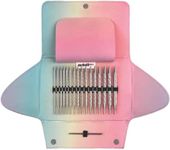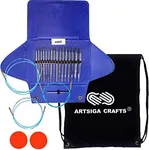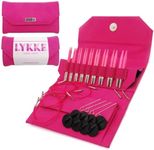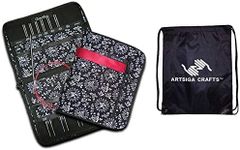Buying Guide for the Best Interchangeable Needles
Choosing the right set of interchangeable needles can make your knitting experience much more enjoyable and efficient. Interchangeable needles are a versatile tool for knitters, allowing you to switch needle sizes and cable lengths easily without needing to buy separate fixed circular needles for every project. When picking a set, it's important to consider how the features of the needles match your knitting style, the types of projects you enjoy, and your comfort preferences. Understanding the key specifications will help you select a set that feels good in your hands and supports your creative goals.MaterialThe material of interchangeable needles affects how they feel in your hands and how your yarn moves across them. Common materials include wood, metal, and plastic. Wood needles are warm to the touch and provide a bit of grip, which is helpful for slippery yarns or beginners. Metal needles are smooth and allow stitches to glide quickly, making them great for fast knitters or those working with sticky yarns. Plastic needles are lightweight and affordable, but may not be as durable. To choose the right material, think about your comfort, the types of yarn you use most, and whether you prefer a slick or grippy surface.
Needle Tip ShapeThe shape of the needle tip can be sharp or blunt, and this affects how easily you can insert the needle into stitches. Sharper tips are excellent for intricate patterns like lace or cables, where you need to manipulate stitches precisely. Blunter tips are better for general knitting and for yarns that split easily. If you often knit complex patterns, a sharper tip may be best, but for everyday projects or if you find sharp tips uncomfortable, a blunter tip might suit you better.
Needle Size RangeThe size range included in a set determines what kinds of projects you can tackle. Sets usually cover a range from small to large sizes, but the exact range varies. Smaller sizes are needed for socks and fine garments, while larger sizes are used for bulky projects like blankets. Consider the types of projects you knit most often and make sure the set includes those sizes. If you knit a wide variety, a broader range is helpful.
Cable Length OptionsInterchangeable needle sets come with cables of different lengths, which allow you to create circular needles of various sizes. Shorter cables are good for hats and sleeves, while longer cables are needed for sweaters and blankets. Some sets offer more cable lengths than others. Think about the projects you enjoy—if you knit a lot of large items, make sure the set includes long cables, and if you like smaller projects, check for shorter cables.
Join MechanismThe join is where the needle tip connects to the cable, and its quality affects how smoothly stitches move across it. A good join should be smooth and secure, so stitches don’t snag or catch. Some joins screw together, while others click or snap. If you knit tightly or use heavy yarns, a secure join is especially important. Try to choose a set with a reputation for smooth, reliable joins to avoid frustration during your projects.
Accessories IncludedMany sets come with extra accessories like end caps, cable keys, connectors, and storage cases. End caps let you use the cables as stitch holders, while cable keys help tighten the joins. Connectors can join two cables for extra length. A good case keeps everything organized. Consider which accessories you’ll actually use and whether the set includes them, as this can add value and convenience.
